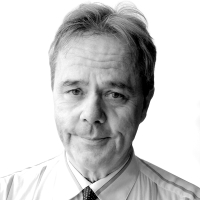The water was just cresting the seawall at the foot of Wall Street on Monday morning when it stopped and then slowly began to recede.

But there were no sighs of relief, only the sense that a monster of a size almost beyond imagining was drawing in its breath and coiling its muscles as it lumbered ever closer. It would be delivering a blow whose magnitude could not be reckoned until it struck.
And with it would come the next high tide at New York Harbor, likely higher than any in the city’s history, rising with the storm’s unprecedented power to as much as an 11-foot surge because of a full moon.
“The real flooding is going to come tonight,” Mayor Bloomberg said at an 11:30 a.m. press conference. “Eight o’clock so going to be the worst and that’s only a few hours from now.”
Back down at the harbor, the tide was still going out to sea where Hurricane Sandy had begun its slow turn toward land. The storm was hundreds of miles wide and it was whipping up winds as high as 100 mph. It was itself lumbering at only 18 mph, but that made it all the more dangerous because when it finally arrived it would not just be roaring through.
To stand at the churning harbor’s edge and see how high it was and then consider how much higher it might rise was to sense the magnitude of the approaching force. Not just some wave but the sea itself would be rising.
In the meantime, the supposedly great powers of Wall Street could do nothing more than what the city was doing at subway entrances. The New York Stock Exchange and the portal to the R train both had piles of white sandbags, though the latter also had sheets of plywood.
Low tide came just after 2 p.m., but it only marked when the water began to rise again as the storm came ever near. All anybody could do was wait.
A police car was parked with roof lights flashing outside the shuttered Wall Street heliport. The water was already lapping at the top of the pier-like landing pad that was built out into the harbor at what was supposed to be 7 feet above sea level.
This is where the president lands when he helicopters into Manhattan. President Obama has stepped off Marine One here again and again over recent months for fundraisers. Mitt Romney has come to New York for the same purpose.
At their three debates, neither man had even mentioned the climate change that nearly all scientists believe will generate more and more extreme weather as global warming begets global derangement.
“Isn’t that amazing?” noted scientist Klaus Jacob of Columbia University was saying of the lapse. “It’s almost inconceivable.”
Jacob was not ready to ascribe any particular event to human-induced climate change warming, but he did note that as the ocean becomes warmer it imparts greater energy to hurricanes. He said he has no doubt that the extreme will become more and more commonplace.
“That one I can say with great confidence,” Jacob said.
Thanks to another weather extreme in a year of record droughts and wildfires, nobody would be landing at the heliport on this day. And Obama had suspended his campaign for president to be the president, huddling at the White House with his advisers to muster the federal response to the storm. All his great power was nothing in the face of the power of weather.
In New York, Con Edison cut power to Lower Manhattan. A crane was teetering over W. 57th Street in midtown Manhattan. There was also a report of a building collapse in Queens, another in Manhattan’s Chelsea neighborhood, and news of a person being struck by a falling tree in Brooklyn. It seemed all but certain that more people were going to be hurt before it was over.
The water was continuing to rise and it kept rising. A call went over the police radio just after 8 p.m. reporting on the conditions at the lower end of Wall Street and the surrounding blocks.
“The streets are flooded out and it’s still rising.”
But soon the tide would crest and eventually the water would again recede. The helipad might even be ready for Marine One should the president wish to come inspect the damage before he resumes campaigning in these last few days before the election, where the big issue is the economy.






